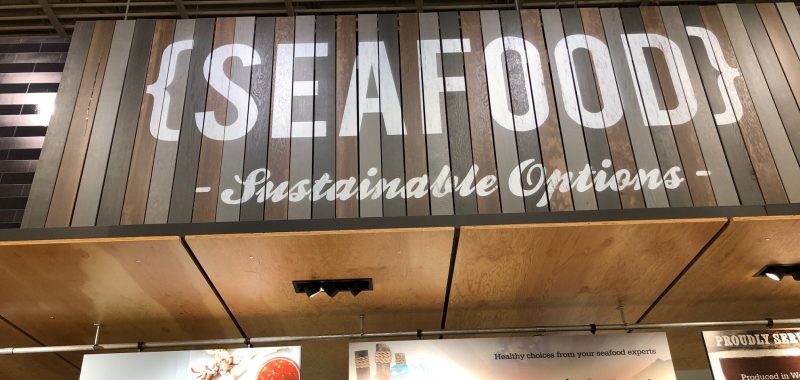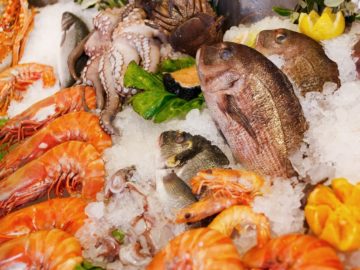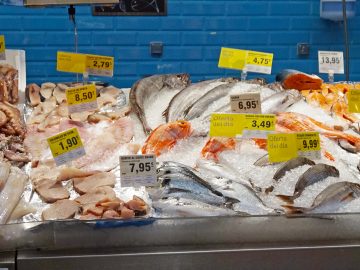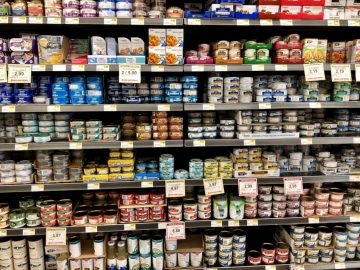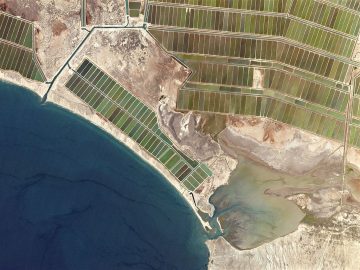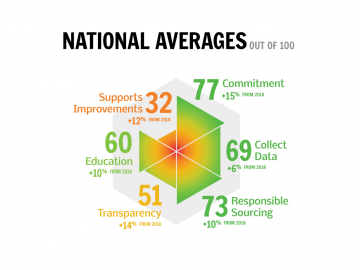Education doesn’t stop when we leave school – retailers need to do their part to educate customers and suppliers about their sustainability policies.
At the start of July, SeaChoice released our first annual update to Seafood Progress – an online resource that assesses and compares major Canadian food retailers’ sustainable seafood commitments and what they are doing to achieve them. Seafood Progress has six steps that follow the framework produced by the Conservation Alliance for Seafood Solutions in their Common Vision for Sustainable Seafood. This post is the fifth in a series that looks at each of the six steps in detail, highlighting trends, shortcomings and leaders in action.
The previous four posts reviewed how retailers scored on their Commitments, Data Collection policies, Responsible Sourcing practices and on Transparency. This post looks at Education (Step 5), including what retailers’ policies are for training their seafood staff, providing information in store about their sustainable seafood, and for working with their suppliers to help meet their commitments.
Step 5 saw the biggest year-to-year improvement in the national mean, or average, scores of any steps in Seafood Progress, jumping from 50 to 68 out of 100. Part of the reason for this increase is that two additional retailers (Sobeys and Canada Safeway) engaged with SeaChoice in the development of their profiles and shared new information with us that justified increases in their scores compared to last year. SeaChoice recognizes METRO, Buy-Low Foods and Save-On-Foods as the highest scoring retailers for this step and commends them on their education-related activities. One retailer – Costco Canada – scored zero across all indicators in this step because there was no publicly available information with which to score its education-related policies and activities.
Five of the retailers profiled are conducting training programs for all their seafood staff regularly (at least every two years), while three also conduct training for all staff but less frequently. It is important that seafood staff understand basic seafood sustainability issues and the principles of the retailer’s seafood policy or commitment so they can accurately answer customers’ questions and help them choose seafood that meets their needs. For example, Buy-Low Foods updates its seafood counter staff regularly on which products are Recommended by the Ocean Wise Seafood Program so that they can help customers choose more sustainable options. METRO, which uses fewer eco-labels in store, ensures its staff are knowledgeable about its sustainable seafood policy, seafood eco-certifications, and the environmental impacts of fisheries such as overfishing and bycatch through training programs, in-person workshops, and an online resource library.
However, retail staff are not always around or available to chat with customers about seafood options, which is why it is important that retailers also provide written information on their seafood policies – such as posters, pamphlets, or screens – in their seafood aisles. Currently only one retailer, METRO, provides detailed information on its seafood policy in stores. All METRO fresh seafood counters have screens with information on METRO’s seafood commitment displayed, and its Quebec stores also have pamphlets that explain its Fraîcheur traçable campaign (“Freshness you can trace”). Four retailers profiled include some information on their sustainable seafood policy at their seafood counters, for example highlighting that they are an Ocean Wise partner and directing people to visit the Ocean Wise website for more information on the program. SeaChoice encourages the retailers that have no information on their seafood policy available where their seafood products are displayed to consider developing some communications that will help their customers understand their policies.
Finally, it is important that retailers communicate their policies and expectations in the other direction – to their suppliers. Four retailers reported to SeaChoice that they regularly speak to their suppliers about their sustainable seafood commitment to help ensure the products they supply exceed the retailer’s expectation, and two (Loblaw and Buy-Low Foods) reported regular engagement plus providing direct support, as needed, to help ensure all seafood products are procured in line with their policies. For example, Loblaw reports helping its suppliers find eco-certified fisheries and farms that meet its commitment for private label products, and Buy-Low reports helping its suppliers identify more sustainable sources for some products.
Thanks to the efforts of seafood advocacy organizations and forward-thinking seafood businesses, there is already a much greater awareness of seafood sustainability issues than there was ten or fifteen years ago – but it could be better. Many people still find choosing seafood to stressful and confusing, so the more that retailers do to help, for example by clearly explaining their sustainability policy in store or labelling products that meet robust sustainability thresholds, the better. And since the sustainability of retailers’ products will depend on the sustainability of the products they get from their suppliers, it’s important that suppliers understand retailer’s expectations and aspirations.
Others in this series:
